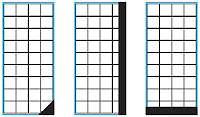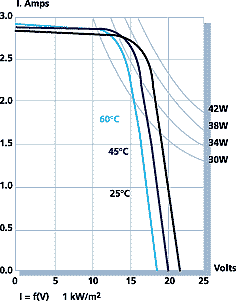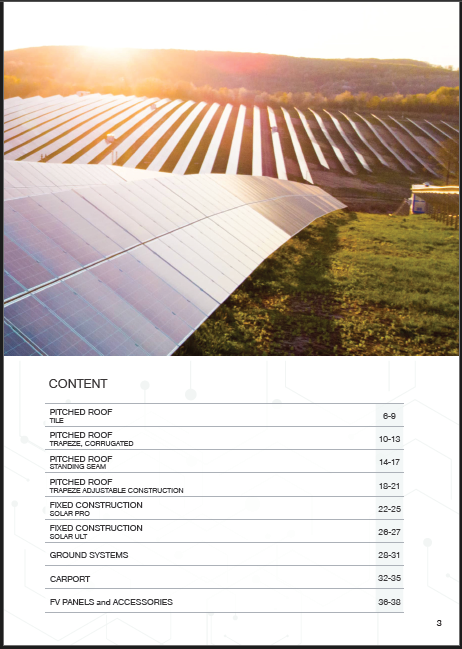When people think about alternative or renewable energy, the first image they keep in mind is often large blue or black solar panels on roofs or portable signs on the highway that have a small panel.These solar panels, also known as photovoltaic modules (or PV modules), converted solar light into electricity, and are the basis of renewable energy for decades.The photovoltaic effect (which explains the way the sunlight turns into electricity) was discovered more than a hundred years ago!However, in the beginning, the wide application of this technology was very gradual.Only in recent years, photovoltaika has gained broad popularity as an alternative way of producing electricity. Supplarant power supply does not have to be complicated.This article is a good place to start.
In 1958. The first PV modules were launched in space satellites.Even today, solar energy is the main source of energy at the International Space Station.Also on Earth, PV is traditionally used in areas where there is no practical source of electricity, but there is plenty of solar air.Solar panels are often used for remote applications: power cabins, RV, boats and small electronic devices in cases where network service is not available.Recently, "network interactive" solar electrical systems began to be more often used as a cost-effective way to introduce solar power supply to our daily life.We can now use available solar energy without enjoying a secure electric network.
The photovoltaic (pv) module or solar electric panel is the smallest replaceable unit in PV string.The module is an integral unit that provides support for numerous PV cells that are electrically linked and protected from the elements.The electrical output of the module depends on the size and number of cells, their electrical connectivity and, of course, from the environmental conditions to which the module is exposed.Solar electric panels exist in all forms and sizes and can be made from different materials.However, the most commonly used module is a "glass plate sandwich" that has 36 PV cells that are connected to the series to produce enough voltage for charging 12 volts battery.The purpose of the structure is to provide a rigid package and the protection of intercellular connections from the environment.Plus (+) and minus (-) connectors are located on the back of the interconnection module.Modules can have an individual metal frame or can be protected with rubber seal and are intended for installation in a larger installation system that aims to hold several modules.
MPPT The type of solar charging controller are specifically designed to ensure that your solar panel works with maximum power.Using this type of solar charging controller can increase filling efficiency by as much as 30%.
There are four factors that determine the effect of solar electric panel: photovoltaic cell efficiency, load resistance, solar radiation and cell temperature.The efficiency of the solar cell determines the production process;Today's commercially available modules are from 3% to 17% effective in converting solar energy into electricity.The load resistance determines where the module will act on the curve and voltage (I-V).Obvious desirable workpoint is a point in which the maximum power is generated (the power is calculated by multiplication of the current voltage time), and called the peak point of power.Study the I-v the wrong shown below.This curve represents the effect of all PV generators, from the cell to the largest array.
There are four factors that determine the effect of solar electric panel: photovoltaic cell efficiency, load resistance, solar radiation and cell temperature.The efficiency of the solar cell determines the production process;Today's commercially available modules are from 3% to 17% effective in converting solar energy into electricity.The load resistance determines where the module will act on the curve and voltage (I-V).Obvious desirable workpoint is a point in which the maximum power is generated (the power is calculated by multiplication of the current voltage time), and called the peak point of power.Study the I-v the wrong shown below.This curve represents the effect of all PV generators, from the cell to the largest array.
PV modules are very sensitive to the shadow.Unlike the solar thermo-panel that can tolerate weak shadow, many brands of PV modules cannot even tolerate shadow branches without leaves.
The obstacles for which shadows can be defined as soft or hard sources.If a tree branch, the hole on the roof, chimney or other element that creates a shadow from distance, the shadow is diffuse or scattered.These soft sources significantly reduce the amount of light in the cell (AMA) module.Solid sources are defined as those who prevent the light to the cell, such as blankets, branches, bird feces or similar, sitting directly on glass.If even one cell of the whole is covered with a hard shadow, the voltage of that module will descend to half its values to protect yourself.If enough cells are hardly shaded, the module will not convert energy, and there will be a small drain of the energy of the entire system.
A partial shadow that falls even one cell of 36 cells modules will reduce its output power.Because all cells are connected in a serial series, the weakest cell will influence that other cells reduce their strength.Therefore, whether ½ is one cell under the shadow, or is ½ row of cells under the shadow as shown, the reduction of strength will be the same and the proportion of the surface under the shadow, in this case 50%.


Examples of partial shadows on cells that will reduce the strength of the solar electric panel by 50%.When the whole cell is under the shadow, it can act as a consumer of energy produced by the rest of the cell and start the module itself to protect yourself.The module will direct the power around the series of array.If even one cell in a series is under the shadow, as it can be seen on the right, it will probably cause the module to reduce the power level to ½ their full available values.If the row of cells on the bottom of the module is completely under the shadow, as seen in the image above, the output power can fall to zero.The best way to avoid dropping output power is to avoid shadows whenever possible.However, as it is impossible to prevent occasional shadows, the use of fairy-bearing diodes is recommended around serial connected modules.Almost all solar panel panels are supplied with these diodes built into the module itself.You don't need fairy diodes if all modules are parallel, ie.12-volt string with 12-volt modules and many designers do not use them on 24-volt strings.However, for stress sequences greater than 24 volts, fairy diodes should be used around each module to ensure an alternative path of electricity in the shadow case.Many module manufacturers provide models with fairy diodes integrated into the module distribution box.If you want to connect modules serial, ask the supplier for this feature.The use of fairy-bedded diodes may dispose of, but does not prevent the loss of energy production that creates a shadow.It is important to check potential shadows before installing PV field.Consider seasonal changes in the leaves on the trees and the corners of the sun.After the installation, the surface must be maintained to prevent the weeds or branches from making shadows on a sequence.
Solar electric panels should have durable connectors on the module.Connectors should be firm, and the method of binding wires should be simple, but that still provides a secure connection.Most modules have sealed distribution boxes to protect links.The field testing shows that PV cells and connectors between cells within the module rarely fail.Most of the problems occur in the timing box of the module where mutual connections between modules are made.They can often be repaired on the ground without replacing the module.Before buying a solar power panel, see the junction box and make sure it is easy to connect the connectors.Are the terminals robust and is there a place to connect the Bajpas diode?Is the timing box of good quality?
The switch or switch should be installed during the maintenance within the combinatorial box for PV insulation.This same recommendation is valid for the battery circuit, so the second switch or circuit breaker is required.Also, electric circuit breakers are usually installed to insulate each operation.Fuses are used to protect any electricity conductor.Fuses and cables in a series of cars should be dimensioned to transmit maximum electricity that could be produced by short-term "sunlight focusing - up to 1.5 times a short circuit current with 1,000 W / m2 radiation.Slow fuses or PV switches are recommended.Only fuses intended for one-way electric should be used.(Auto-mobile fuses must not be used.) All metals in a series of solar panels should be earthed to protect the string from lightning lights and provide an additional security staff running on the system.A negative conductor on most solar electrical systems is also grounded on the same ground electrode used to earn the equipment.Other shutdown requirements and grounding are listed in the National Electric Code® (NEC).This code should ensure that a secure, durable solar electrical system is installed.
